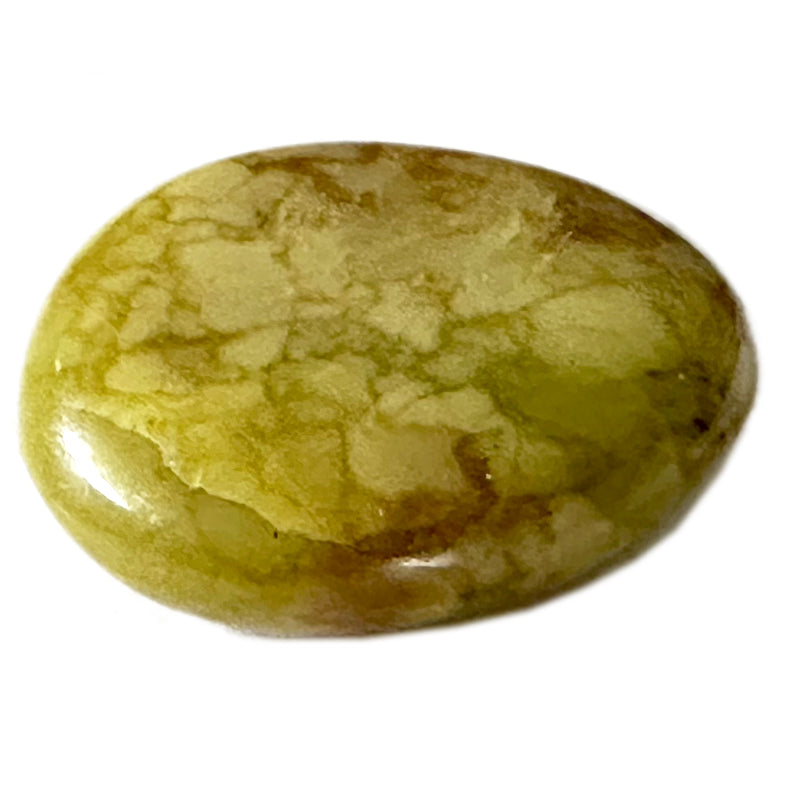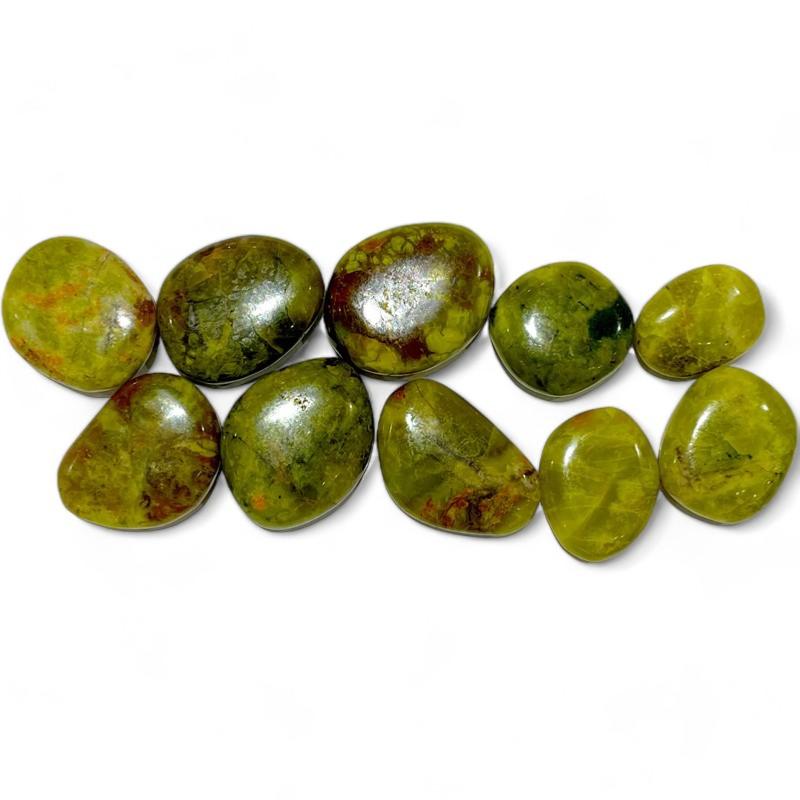Green opal pebble Madagascar A
OPAV-G-01
- Regular price
-
7,90 € - Regular price
-
7,90 € - Sale price
-
7,90 €
Couldn't load pickup availability
Learn more
OPAV-G-01
Origin: Madagascar
Grade: A
Dimensions:
Between 30-50mm
30-50mm green opal pebble
Sold individually.
Patterns and colors may vary from one stone to another.
An opal is composed of hydrated silica, with traces of uranium, magnesium, calcium, aluminum, iron, arsenic, sodium and potassium. It also has a high water content which can reach up to 20% depending on the variety.
Opal forms during alternating wet and dry periods. Precipitation loaded with various elements infiltrates into the substrate. Then in dry periods, evaporation will allow the formation of upper layers of chalcedony and quartz.
The etymology of the word opal comes from the Sanskrit upala meaning precious stone. We notice that opal is the only gem that is splendid without any cutting beforehand.
For decades, the origin of the magnificent colors of noble opals was not explained until 1965, when the scanning electron microscope appeared. Thus, scientists were able to highlight the structure of opals. Made up of spheres of varying dimensions, opals have a milky appearance; they are common opals. In noble opals, the spheres are of identical dimensions and the light then interferes and produces this incredible multi-colored appearance.
It should be noted that water has a great importance in the appearance and behavior of the opal. It is not uncommon to see raw opals presented to the public in containers filled with water.
Opal has a hardness of 5.5 to 6 on the Mohs scale. For comparison, diamond has the highest hardness, 10 on this same scale.
According to Greek mythology, opal was associated with Zeus's tears of joy after his victory against the titans. Her tears upon contact with the ground transformed into opals. This legend mainly concerns blue opal. It is a common opal in various shades of blue. It was even thought that opal gave its wearer powers of clairvoyance and divination.
Among the Romans, opal was a stone of hope. Pliny the Elder tells the story of Nonius, senator dismissed by Mark Antony (83 - 30 BC), because he did not want to give him an opal. Marc-Antoine absolutely wanted to offer it to Cleopatra. Nonius preferred to flee with only his precious opal and his collection of stones. According to an 18th century legend, Nonius opal was found in the ruins of Alexandria.
In ancient times, opal was considered a precious stone. In the Middle Ages, blonde women wore opal necklaces to preserve the color of their hair. Opal also had the name “ophthalmios” which literally translates as “eye stone”. Indeed, it was thought to have eye protection properties.
Many writers describe this stone by comparing it to fireworks, volcanoes, galaxies, etc. The Bedouins explained that this stone fell during storms enclosing lightning.
In India, a legend says that the Rainbow Goddess was so beautiful that she was constantly courted, even harassed. She then chooses to transform into opal.
However, opal was considered a stone of misfortune. A myth from a novel by Sir Walter Scott entitled Anne of Geierstein or the Daughter of the Mists, published in 1829, harmed the stone. Indeed, the heroine Lady Hermione died after her opal received holy water. She was accused of witchcraft. In a few months, the opal market suffered a 50% drop.
But a more reasonable explanation emerged: 19th century lapidaries and stone setters had difficulty working this stone without damaging it. The frequent breakage associated with this stone gave the opal a connotation of bad luck.
The main deposits of opal are in Madagascar, Australia, USA, Spain, Mexico, etc.
Green opal is very common throughout the world. To date, there are more than 3,000 deposits of this magnificent stone. However, Australia remains the leading producer of quality opals. In fact, around 95% of all opals on the market come from this country, 4% come from Mexico and the rest are scattered around the world. In Germany, opals called Eibenstock opals are produced. In Syria, opals have also been discovered, as well as in Madagascar, Indonesia, New Zealand, Mexico, Brazil, etc.
Opal is formed following accumulations of siliceous fluids. These accumulations are deposited in various rocks, such as tuff. For the record, tuff is a rock formed by accumulation of volcanic projections of tiny fragments that may contain rocks. This rock consolidates under the action of water. These accumulations can take place in organic matter (carbonaceous matter produced by living beings, plants, animals or microorganisms). Then the water content of the opal reduces and the silica gel forms a solid consistency. Each opal has a different water content, this can range from 3% to 20% of its composition.
The different colors of opal come from its inclusions like copper, nickel, silver, cobalt, iron, etc. Green opal belongs to the family of common opals, because it does not have this phenomenon of iridescence and opalescence. However, it presents various shades of green. This is formed by a sedimentary process and contains silicic acid, with solidified iron and nickel. It is this combination that gives it these beautiful green hues.
A powerful protective stone, green opal provides peace and serenity. It allows you to free yourself from blockages linked to childhood trauma. It is a beautiful stone of resilience. It facilitates the reconstruction of one's inner self. It gives the courage to face the trials of life.
This magnificent green stone represents renewal. It pushes its wearer to act for change. It encourages starting from scratch and brings profound letting go. The person gains confidence in themselves and in others. She finally frees herself from this mistrust and her lack of confidence. She allows herself to move forward.
Green opal protects its wearer from negative energies and harmful influences. A person under the influence can free themselves by wearing this incredible stone. She gains new strength and can thus leave a harmful partner. This stone symbolizes freedom and new beginnings.
Its beautiful green color is the color of spring, of the awakening of nature for a new season. This stone dissolves conscious and unconscious barriers. It allows you to fight against self-devaluation, to release repressed anger or feelings of resentment. Little extra: this stone frees creativity and imagination.



Green opal pebble Madagascar A
- Regular price
-
7,90 € - Regular price
-
7,90 € - Sale price
-
7,90 €
-
100% SECURE PAYMENT
Paypal, credit card, check, transfer
-
FREE DELIVERY
from 40€ purchase
-
SATISFIED OR REFUNDED
14 days to change your mind
-
CUSTOMER SERVICE AVAILABLE
contact@laboiteacailloux.com
to receive all our offers, good deals and new products from La Boite à Cailloux


